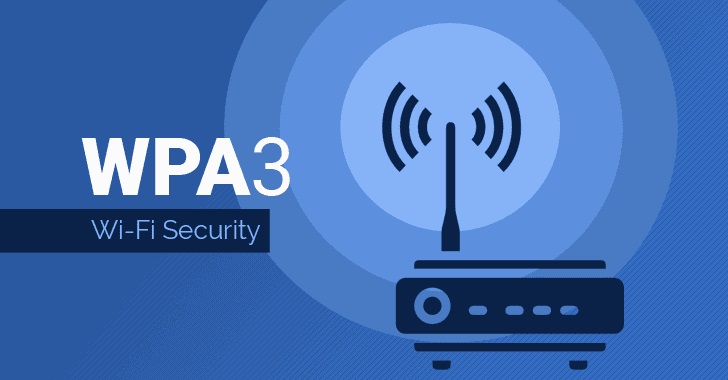WPA3, the most modern Wi-Fi security protocol, provides better protection against internet assaults.
The existing Wi-Fi security standard, WPA2, which has been in use for more than ten years, will be replaced by this one.
WPA3 uses the most advanced encryption methods and security measures to prohibit unauthorized access to Wi-Fi networks, making it more difficult for hackers to steal crucial data or compromise network-connected devices.
One of the key improvements of WPA3 is its resistance to brute-force attacks, which are frequently used by hackers to crack Wi-Fi passwords.
The better password-guessing defense provided by this new protocol assures that the password is not divulged to the attacker during the authentication procedure.
New Security Features in WPA3
New features including Opportunistic Wireless Encryption (OWE) and Forward Secrecy are also included in WPA3.
Open Wi-Fi networks, which were previously unprotected and subject to intrusion, can now be encrypted thanks to OWE.
Forward Secrecy makes sure that the data that has already been transmitted is safe, even if the encryption key is stolen.
WPA3 encryption, in general, is a crucial enhancement for Wi-Fi security that offers improved defense against online threats.
It makes it more difficult for attackers to hack Wi-Fi networks and devices by providing enhanced authentication, stronger encryption, and cutting-edge security features.
The most recent Wi-Fi security standard, WPA3, offers better security measures than its forerunner, WPA2.
The following are some of the main variations between WPA2 and WPA3:
- Authentication: WPA2 has a shared password-based authentication method called Pre-Shared Key (PSK) that is susceptible to brute-force attacks. Simultaneous Authentication of Equals (SAE), a new authentication technique used by WPA3, on the other hand, offers a stronger defense against password-guessing attacks.
- Galois/Counter Mode Protocol (GCMP-256), a new encryption method introduced by WPA3, offers greater encryption and is less vulnerable to assaults.
- Defense against offline dictionary attacks: WPA2 has a weakness that allows an attacker to intercept the Wi-Fi handshake and perform offline brute-force attacks to guess the password. By using a secure key exchange that makes it harder for attackers to guess the password, WPA3 defends against these assaults.
- Opportunistic Wireless Encryption (OWE): With the release of WPA3, a brand-new feature known as OWE that offers encryption for open Wi-Fi networks is introduced. WPA2 did not have this feature, which left unprotected Wi-Fi networks subject to intrusion.
- Forward Secrecy: WPA3 uses Forward Secrecy, which makes sure that the data that has already been transferred is safe even if the encryption key is stolen. Because WPA2 did not have this capability, it was simpler for attackers to decode previously transmitted data.
WPA3 is a safer solution for Wi-Fi networks overall since it has more robust security measures than WPA2.
The fact that WPA3 is not backward compatible with older hardware that does not support the new protocol should be noted.
Comparison with WPA2-Personal authentication and encryption
A Wi-Fi security standard called WPA3-Personal is intended for small enterprises and household networks.
It is WPA2-Personal’s successor and offers more robust security capabilities to defend against online threats.
Simultaneous Authentication of Equals (SAE), a novel authentication technique that offers a more robust defense against password-guessing attacks, is one of the major advancements in WPA3-Personal.
Users no longer need to employ the brute-force-attack-vulnerable pre-shared key (PSK) authentication mechanism thanks to SAE. SAE, on the other hand, employs a secure key exchange technique that makes it more challenging for attackers to figure out the password.
The Forward Secrecy function of WPA3-Personal is another crucial component. This feature makes sure that the previously transmitted data is secure even if the encryption key is stolen.
This is due to the fact that each session uses a different key, which makes it more challenging for attackers to decrypt previously transmitted data.
Opportunistic Wireless Encryption (OWE)
Another feature of WPA3-Personal offers encryption for open Wi-Fi networks.
Previous Wi-Fi security protocols did not include this feature, leaving unsecured Wi-Fi networks accessible to intrusion.
WPA3-Personal significantly outperforms WPA2-Personal in terms of security.
Stronger authentication, encryption, and security measures are offered, making it harder for hackers to access Wi-Fi networks and steal private data.
The fact that WPA3-Personal is not backward compatible with older hardware that does not support the new protocol should be noted.
Additional Security Features
WPA3-Personal not only has new functionality but also has enhanced defense against brute-force attacks.
Attackers can intercept the Wi-Fi handshake in WPA2-Personal and use offline brute-force methods to determine the password.
WPA3-Personal, on the other hand, offers defense against these assaults by employing a secure key exchange technique that makes it more challenging for attackers to figure out the password.
Protection against man-in-the-middle (MITM) attacks
WPA3-Personal also offers improved defense against man-in-the-middle (MITM) attacks.
An attacker uses an MITM attack to intercept user and Wi-Fi network communications in order to steal sensitive data or insert harmful content.
By employing a secure key exchange technique, WPA3-Personal offers defense against these threats by preventing attackers from listening in on user and network communications.
Recap of the benefits of WPA3-Personal
Compared to its predecessor, WPA3-Personal has enhanced security features that make it more challenging for attackers to penetrate Wi-Fi networks.
It is crucial to remember that WPA3-Personal is incompatible with older hardware that does not support the new protocol.
Hence, before updating their Wi-Fi network to the new security protocol, users should see if their gadgets are compatible with WPA3-Personal.
Learn more about Home Network Security
